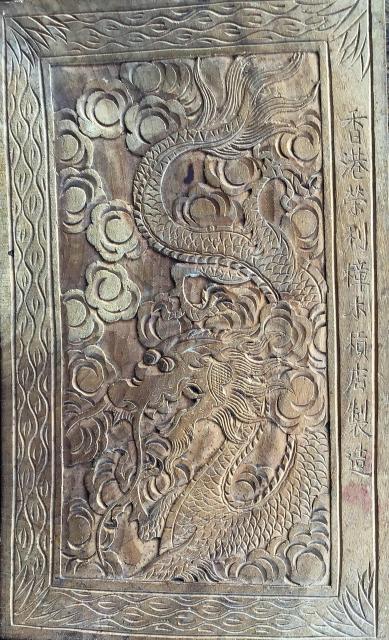I asked my father, Raymond Smith, if he would arrange for me to see a woodcarving workshop. He took me along to a shop which sold camphor wood chests and we went down to the basement and I was introduced to a worker who was very young.
He asked me what I wanted to see him carve and I said a dragon. He pulled down a suitable slab and started work. What impressed me more than anything was that he made no attempt to draw an outline first but seemed to make a series of random cuts all over the piece of wood, all in the same direction. He used the ball of his hand to push forward the chisel, which was very sharp. When he had made all the cuts he wanted to in one direction, he turned the board slightly and made cuts in another direction and so on until the dragon appeared.
I then asked if he could carve his name and the name and address of the shop on the right side. I have never had these letters translated, so I have no idea what they say. Perhaps someone on Gwulo can tell me. Click here to see this detail of the carving.
It was done in such a nonchalant manner, with so little feeling that a work of art was being produced, that I still marvel at that experience 70 years later. The wood still has an entrancing scent. Thanks to Gwulo user tkjho for the translation of the Chinese characters: "Made by HK Wing Lee Camphor Wood Chest Shop".

Comments
Translation
Made by HK Wing Lee Camphor Wood Chest Shop
Camphor Wood Chests
Amongst our wedding presents in 1963 was a camphor wood chest and I am sure our friends bought it from one of the many shops that lined Canton Road in those day. We still have it though sadly something hot was put on the lid many years ago and the lacquer fiinish marred.
Maybe the best chests were made entirely of camphor wood but most like ours were only lined with camphor wood; even then, after 58 years , ours stlll exudes that unique fragrance of camphor when opened so much sweeter than old alternative, mothballs.
Nick